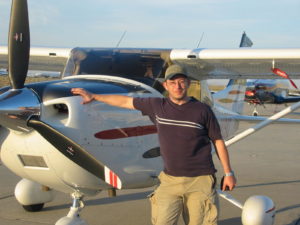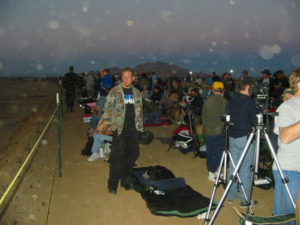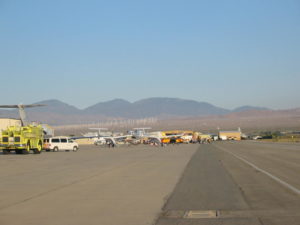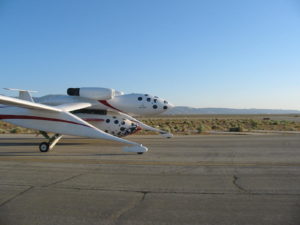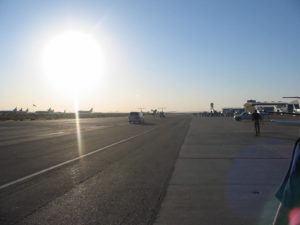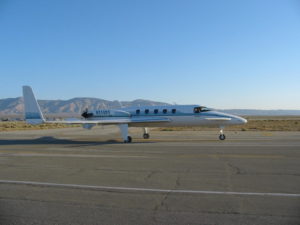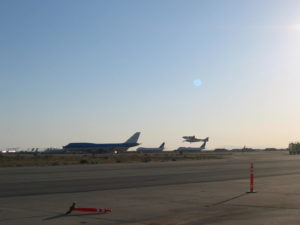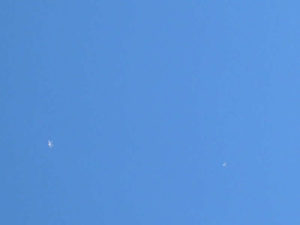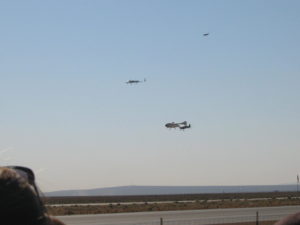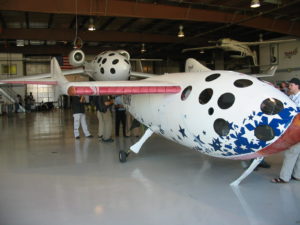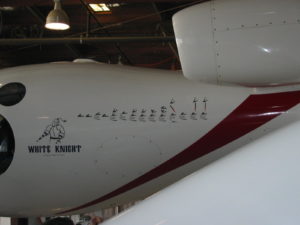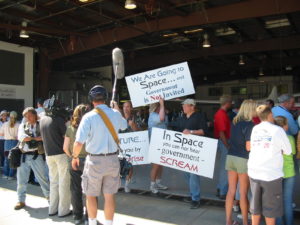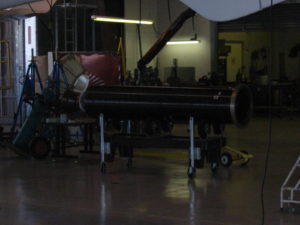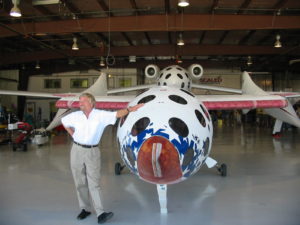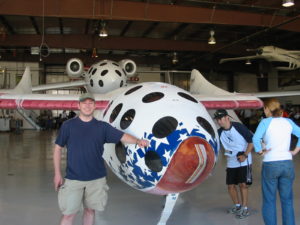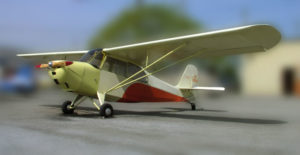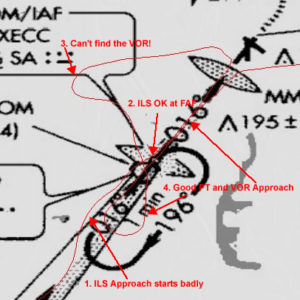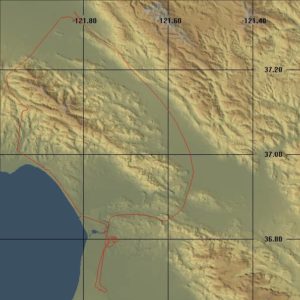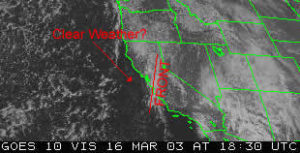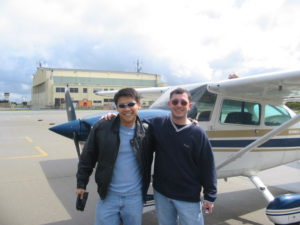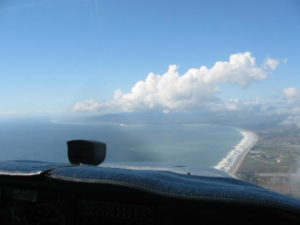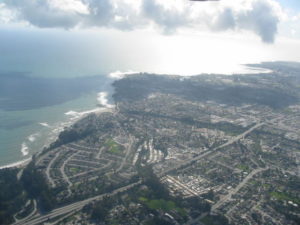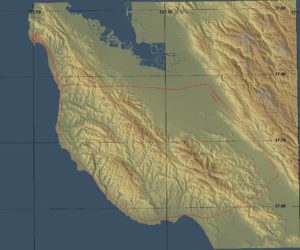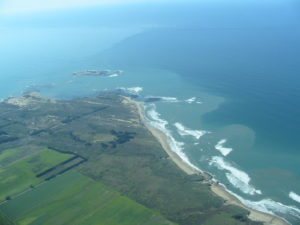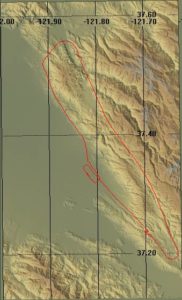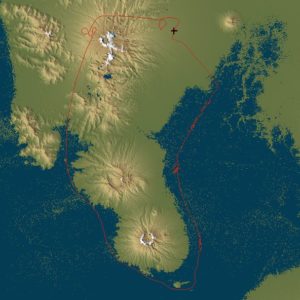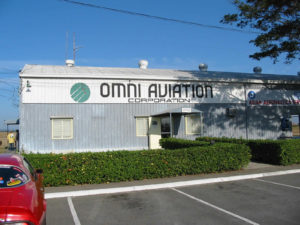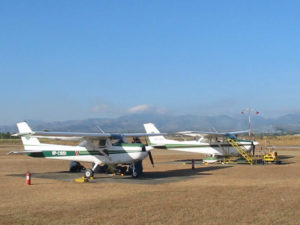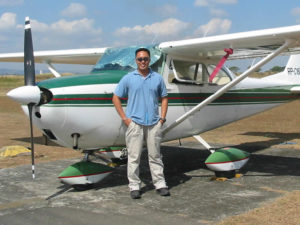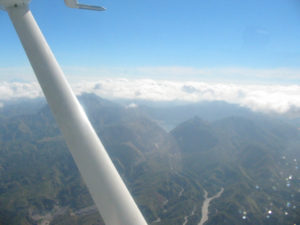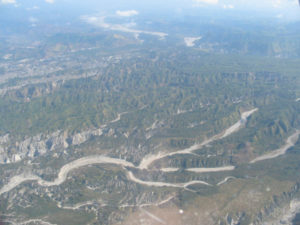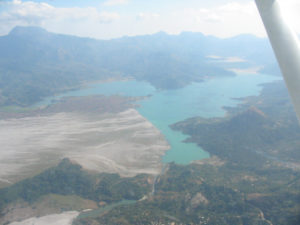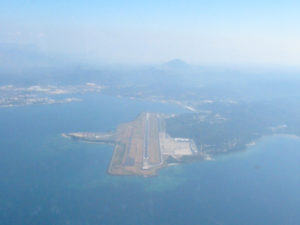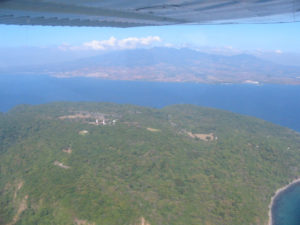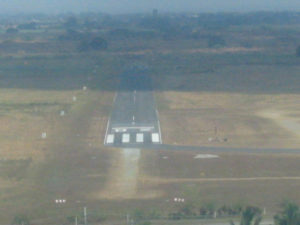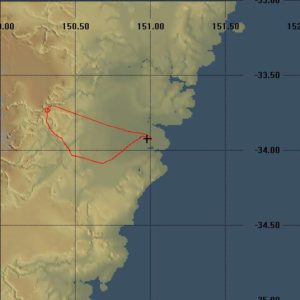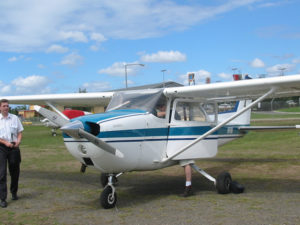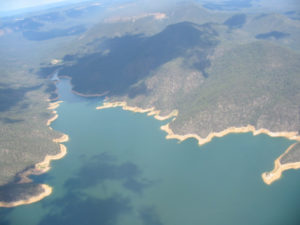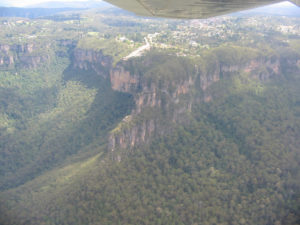Well today I passed my commercial checkride. Amazing, I can now be paid for this hobby. I doubt I’m going to get rich anytime soon. But it is sure nice to have it behind me.
The day started off about 7am, checking the weather. It has been really foggy in the San Francisco Bay Area and the California Central Valley for the last week. It has been zero/zero some mornings. The forecast was for more of the same today, but not that bad. My checkride was to be out of Mather Airport in Sacramento, about a 40 minute flight from Reid Hillview in San Jose where I’m based. I had agreed with the Examiner on Friday, that as long as it was likely to be above minimums for the ILS approach (200’ ceiling, 1/2 mile visibility) when I arrived and forecast to be VFR by midday we would be good to go. As it turned out the ceiling was at 1700’ with 2 miles visibility and forecast to be 4000’ scattered later in the morning. I got to Tradewinds at 8am, got a briefing, filed my IFR flight plan and called the Examiner to let him know I was on my way. I never even got into the clouds on the way up, the uncanny ability of ATC to vector me around what few clouds existed still amazes me. By the time I got to Mather the clouds layer was so broken up that it was a clear shot into the airport on the ILS with visibility around 3 miles.
The oral part of the exam began with a briefing from the examiner – usual stuff with a special emphasis on positive exchange of controls in the event of a traffic conflict (sounds like he had a bad experience with this at some point). We went over the paperwork – application form, logbook endorsements and written test result. I had scored a 98% on the written and the Examiner commented that “this must mean I already knew all this stuff” – seemed like a good start. Once he was happy the paperwork was fine and I paid him $350 we got into the questions. For the benefit of any aspiring commercial pilots studying for the checkride this is what he asked as best I can remember.
- What paperwork needs to be on board the airplane ? …Airworthiness Certificate, Registration, Flight Manual and Weight & Balance.
- What does an Airworthiness Certificate mean ? …That when the plane was originally certificated it meet all the specifications and requirements of the FAA to be airworthy.
- Do Airworthiness Certificates expire ? …No, as long as the aircraft is maintained according to the regulations.
- When is a 100 hour inspection required ? …When the airplane is “for hire”, as in carrying people or things for money, or for flight instruction.
- If a planes annual inspection was completed today (Dec 13th) when is the next annual required ? …Before the end of December next year.
- If the annual inspection has expired by one day what does this mean for the Airworthiness Certificate? …Nothing, but the plane is not airworthy to fly until the annual is completed.
- If the annual inspection has expired what should be done with the Airworthiness Certificate ? …I didn’t know – but he told me it should be removed from the airplane.
- Why should it be removed ? …So that a pilot will see it is missing and go back to find out why, and so hopefully discovering that the annual has expired and preventing him from flying an un-airworthy aircraft because he didn’t check the maintenance logs before he left.
- What are you allowed to do as a Commercial Pilot ? …Part 119.1 has a list of activities allowed (at least that are excluded from the part), I was going to list them out but he stopped me.
- If I was a photographer for the Sacramento Bee newspaper and I came to you and said “I’ll pay you $500 to fly me down to the scene of a forest fire to take pictures and then fly me back”, would you be able to do this legally ? …I said that aerial photography was one of the areas that was permitted, but I wasn’t sure I could also provide the plane. He said that what was important was the purpose of the flight, so in this case I could provide the airplane and charge for it. What you cannot do is engage in carriage of people or things for money which obviously means taking people or things from one place to another (not back to the place you started from).
- If the same photographer asked you to drop the pictures down to Modesto could you charge ? …No, this would carriage and I don’t hold a commercial operators certificate.
- If somebody asked you to fly them on a sight seeing trip around Folsom Lake in your airplane could you charge them ? …Yes, sightseeing within 25nm of the departure airport and returning to the same airport is allowed, but has to meet the drug testing requirements in part 135.
- Then we pulled out he San Francisco Sectional chart and he pointed to a small uncontrolled airport. If you were doing real low pattern work at 600’ what airspace would you be in ? …Class G
- What are the VFR minimums for this airspace ? …1 mile, clear of clouds.
- If you are at 800’ what airspace and minimums would apply ? …Class E (it has a magenta fuzzy circle around it), 3 miles, 500 below, 1000 above, 2000 horizontal).
- Then he pointed to the airspace around Beale Air Force Base, what class of airspace is this ? …Class C.
- If you were flying from one side to the other at 4500’ what should you do? …Nothing, its top is 4100’.
- What is the lower limit? …2600’ and 1600’
- If you had to fly lower at 4000’ then what? …Establish two way radio communication with ATC.
- What does that mean? …ATC uses you call sign when they reply.
What happens if they say “Aircraft calling, standby”? …Stay clear of the class C airspace, you haven’t established two way radio contact yet, - Do you need a mode C transponder to fly over Beale? …Yes.
- Then he pointed to the words “7500 MSL” printed in blue in an area surrounded by a staggered blue line. What does this mean? …The base of class E airspace is 7500 in this area.
- Then he pointed to the words “CHINA MOA” printed in magenta within an area bordered with a feathered magenta line. What does this mean? …Military Operations Area.
- What should you do in this area? …Be alert for military traffic, call ATC to find out if its being used.
- How would you know who controls the area? …It is listed on the boarder of the chart.
- Do you need a clearance to enter? …No.
- Then he pointed to another small uncontrolled airport with a star printed on top of the airport symbol. What does this mean? …There is an airport beacon.
- Does this mean it has runway lights? …No, but you can find out if it has from the airport legend by looking for the letter L.
- What do the tick marks around the symbol mean? …There is fuel available.
- Then he pointed to the solid magenta 30nm circle centered on San Francisco Airport. What does this mean? …Mode C veil – you have to have an operating mode C transponder within this area.
- What is the ceiling of the class bravo airspace? …10,000’.
- Could you fly over it without a transponder? …No.
- Is there any case when you can fly within the mode C veil without a transponder? …Yes, with prior permission of ATC to ferry the aircraft to a place where the transponder can be fixed.
- If a guy has a private airport just inside the mode C veil and wanted to fly his Piper Cub at 25’ above the ground over his own property would he still need a transponder? …Yes.
- What do you need to enter class B airspace? …A clearance from ATC.
- What would this sound like? …“Cessna 7383X, cleared into class bravo”.
- Then he told a long story about a guy flying a Bonanza from Sacramento to Palo Alto. The guy called ATC when he was over Concord Airport (just outside class bravo). ATC was really busy and said, “Bonanza 12345, fly heading 240, maintain 7000’” (which leads into class bravo), then continued issuing instructions to other aircraft without breaking. The guy kept going and got busted for entering class bravo without a clearance. At his license suspension hearing he successfully argued that the regulation stating you must always follow ATC instructions in controlled airspace trumped the regulation about needing a clearance. However, we agreed, he should have contacted ATC long before and at least tried to confirm “am I cleared into bravo”. Another moral of the story is if this happens to you – always ask for the ATC tapes straight away.
- What is the service ceiling of you aircraft? …I said I thought it was 18,000’ as I pulled out the POH. Turns out its 18,000’ with a working EGT gauge otherwise its 14,300’.
- Is that MSL, AGL or what? …It should be density altitude.
- What is service ceiling? …The altitude at which you can sustain a 100fpm climb. He then went into quite a long rant about the single engine ceiling of twin engine aircraft. Basically to the effect that multi-engine pilots frequently don’t understand that when this is lower than the density altitude of the terrain over which they are flying this effectively means they are flying a single engine aircraft. That is, lose an engine and you are landing whether you want to or not. I could see this is a sore point with him and many multi-engine checkride candidates.
- If the temperature at South Lake Tahoe Airport is 90F, assuming a pressure altitude of 6,000’, no wind and a clean dry runway, what is the ground roll and 50’ obstacle clearance distance for your airplane? …Answered this to his satisfaction using the performance chart in the POH.
- How much does the distances reduce if you have a 15 knot headwind? …Answer straight out of the POH.
- Then he asked my what was the fuel capacity of my plane? …80 gallons, 75 usable.
- What does usable fuel mean? …The fuel available in any normal flight attitude.
- He talked briefly about running a tank down beyond its usable fuel limits and how, when you pitch up on a go around at your destination the fuel would slosh to the back of the tank and the engine would quit.
- What positions are available on the fuel selector switch? …Both, Left, Right and Off.
- Are any specific positions required for any phases of flight? …I said I thought Both was required for takeoff and landing, but I couldn’t remember a placard to this effect. While talking I pulled open the POH section on limitations and found the fuel placard which does indeed say that Both is required for takeoff and landing, which I showed him. He said he hadn’t been sure what was in my plane, but he had been planning on checking when we went out to the plane.
- Given his weight of 162lbs, calculate the weight and CG for the flight we were about to make. …I did the calculation, including the weight reduction for fuel I burned on the way to Mather. He asked me to show him the result on the POH Weight & Balance envelope.
- Noting that our CG would be quite far forward he asked, what would be the effect of forward CG on cruise speed for any given power setting? …I thought about this for a while, looked at the cruise performance tables in the POH, but they didn’t mention CG. I finally guessed it would increase cruise speed – wrong answer. He explained that with a forward CG we would need to add nose up trim, which is essentially asking the horizontal stabilizer to product more “down” force – which is exactly the same as if we had added weight to the tail of the aircraft. Added weight means higher load factor, higher angle of attack so more drag and slower cruise speed. He said that this is a big deal for the airlines and they always try to load to an aft CG (still within limits).
- Given what you just learned what is the effect of CG on stall speed? …Forward CG increases load factor and so stall speed also increases.
- Is you aircraft airworthy? …Yes – He didn’t check any of the aircraft logs.
When was the annual completed? …October.
Prior to flying we had some discussion on exactly how the take-off climb out should be executed with regards to flaps. Basically, Vy on this plane is 88 KIAS (which is fast for a Skylane – my 1980 fixed gear Skylane has a Vy of only 78 KIAS). If you take-off with 20 degrees of flaps it takes a long time to accelerate to Vy and you need to pitch the nose down almost horizontal. This feels quite clumsy in the plane, but the PTS requires that you accelerate to Vy before retracting any flaps. One of my CFI’s had specifically checked this point with the Examiner before the checkride (mainly because, I was objecting to the technique), the Examiner had been pretty emphatic about getting to Vy before the flaps are touched. Thankfully, a careful reading of the POH over the weekend had shown that for a normal take-off you “should retract flaps slowly after reaching 75 KIAS”. It is reasonable to treat a short or soft field take off the same as a normal take-off once you are into the climb phase (having cleared the obstacle or accelerated out of ground effect). I asked the Examiner what speed I should use (75 or 88 KIAS) and he agreed that we should follow the POH. Moral of the story – always carefully read the POH. We also discussed how gear should be retracted on the short field take-off. Again having read the POH – I said only after the obstacle was cleared – which is the right answer. Then the Examiner stumped me by asking why was this the case. After some thought I guessed that as the gear retracts on a Skylane (which is a high wing plane that tucks its gear into the main body a bit like how a bird tucks it legs in), it causes some drag. Basically the wheels turn sideways as they swing into their up position. You don’t want any drag when you are trying to get over the pine tree at the end of the runway so don’t touch the gear until you are clear.
After a quick break it was off to the flying portion. The weather had cleared even more with just a few clouds at about 2,000’. The plan was to take-off to the southeast, climb to 4,500’ run through the commercial maneuvers and then head to Franklin (F72) for the landings. I did a good job of following all the checklists and remembering to do a break check as soon as I started moving. The first take-off he asked for was a soft field. He said to imagine I was taking off with 6” of snow on the ground. We had some discussion about doing this in a retractable gear airplane, basically leave the gear down for a while so the wind can blow off any snow you may have accumulated. I demonstrated a picture perfect soft field take-off, got into ground effect early, pitched to keep the plane there and smoothly let her fly out of ground effect, bring the gear up, then flaps in increments, climb out right at Vy. We turned to a heading of 150 and climbed up to 4,500’. I remembered my climb and then cruise checklists and leveled off right on altitude.
We started with steep turns. He said I could do them one at a time or not (PTS says one should lead straight into the other). I slowed up to about 100 KIAS mentioning that that was the correct maneuvering speed for our weight on the flight, did some clearing turns and completed the maneuvering checklist – we had some discussion about the fact we were now on top of a broken cloud layer so an it was a good thing we were surrounded by hundreds of square miles of flat farm land in the case of an emergency landing. The steep turns were almost perfect (they are usually my nemesis in a checkride – I can only do them right when I’m on my own in the plane). Then we did slow flight, it was a bit unusual. First slow to 90 KIAS, maintain 4,500’, maintain heading. Then 10 degrees of flaps and slow to 80 KIAS. Then turn to a heading (90 degree turn) while slowing to 70, descend 200‘ maintain 70 KIAS. Then 20 degrees of flaps and slow to 65 KIAS, climb back to 4,500’ and turn another 90 degrees. This all went really well – its just like an attitude flying exercise in IFR training and I managed to spend enough time looking at the instruments to fly it pretty well. Then the Examiner asked me to demonstrate a stall and normal recovery from he current configuration (20 degrees of flaps, level 65 KIAS, gear up). This went well. Then a full power-off stall, 40 degrees of flaps, gear down with a full recovery, again this went well. Then an approach to landing stall, I don’t recall the exact configuration I was in, but I think it was clean (no flaps or gear). Basically it was a stall in a descending left turn. It worked ok, but not great (I haven’t practiced turning stalls enough), I over banked a little. Then a power-on stall in a climbing right turn. Basically, clean configuration, full climb power. I screwed it up – let the plane bank way too much and got pretty uncoordinated in the process. He had me repeat it to the right, this one went much better, though it is pretty hard to get a clean stall break on a power-on stall in this aircraft with the gear up. Next up was Chandelles. I did some clearing turns trying to find some good visual references for the maneuver. Basically there wasn’t much to use, we were over a broken layer of cloud in the middle of the Central Valley – so any convenient mountains were a 100 miles away. I ended up using some small cumulous clouds that were poking up from the flat layer as a reference. I did one Chandelle to the left and one to the right. They were acceptable, but I got dinged for not being really smooth on the roll-out, I actually rolled out a bit off heading. I said this was due to the lack of a good visual reference which was pretty true. Then we setup for lazy eights. The first one didn’t go great, same problem being a little impatient with the rollout and so not ending up right on the exit heading with the wings level. He had me repeat the maneuver and the second one was better – basically I just slowed down a bit which always helps in a lazy eight. There really wasn’t much wind so the examiner decided that we would skip the eights on pylons and as the cloud was pretty solid over Franklin we headed to Rancho Murieta (RIU) which is closer to the mountains and over which the layer was still scattered. Thank goodness for GPS, I’d have never found the airport otherwise.
I got the CTAF and airport elevation from the sectional chart. There was a helicopter and a Warrior in the pattern using runway 22. So after dropping down through a hole in the cloud , was passed over mid field at about 300’ above pattern altitude (which was a little low, we passed right over the Warrior on downwind). I didn’t make a great entry to the pattern (fatigue was setting in), basically, made a left turn and came in on left base instead of a right turn to come in on the left 45. Still, the Warrior was on final when I joined base so no harm done. I suffered a moment of panic as I came out of the turn (I was still expecting to be somewhat close to a 45 entry) so I lost sight of the airport – I asked the Examiner to point it out – which he did (CRM right). The first landing was to be a Short Field landing. I came in steep and made a left side slip to lose some altitude. This worked well, but considering the wind was light but 90 degrees across the runway from the right I should of made the slip to the right. We touched down just about within the 100’ spec (he said use the start of the tarmac as he aiming point – which is actually somewhat ambiguous as to the required touch down point from which the 100’ should be measured). However, having neglected the crosswind, we landed somewhat hard was a side force to the left – rather a big no-no for a commercial checkride. I was admonished on the taxi back to runway about crosswind correction. However, obviously not enough as you will see on the next landing. Before that however, the examiner asked for a short field take-off. The field elevation is 140’, he set the altimeter to 100’ and told me the obstacle was 100’ tall so he wanted to see Vx held until we were passed 200’ indicated. The take-off went well, I held in position right at the start of the runway, full power with the breaks held, release, rotate at 50 KIAS, hold 65 KIAS to 200’, then pitch for 90 KIAS, gear up and flaps up slowly after 75 KIAS. This time around he asked me to repeat the short field landing because the last one was poor. Everything went well and at about 20’ above touch down he said “go around”. The go around was pretty good, everything came up at the right time in the right sequence. With the go around we were pretty close to the Warrior, so we extended upwind to get some space. This next landing was again to be a short field landing, but then he pulled the power abeam the numbers to make it an emergency landing. He didn’t specify any particular touch down point so I didn’t volunteer one (so just a plain vanilla emergency landing – not a precision 180 power-off landing). I managed to say the right words about quickly checking the obvious (carb heat and mixture) but as we were next to an airport we would just land. On base I mentioned about securing the aircraft (fuel off, doors open etc.). I also mentioned that I’d turn early into the field as I had a long runway and it fine to use all of it to land. Again I used a left slip to get down – forgot about the cross wind in all the excitement and landed with some side force to the left. The Examiner didn’t say much but wasn’t happy – he told me later he was strongly considering failing me at this point – not sure why he didn’t. Last we did a normal take-off and headed back to Mather (which is very close by), we stayed under the clouds at about 1,200’ and made a left base entry for 22L. At this point the Examiner asked for a no-flap landing with extra added crosswind correction. This actually went OK. But it was really hard in the flare with the nose way up in the air (because of no flaps) and the right wing down. I couldn’t see any of the runway to keep the nose straight. Right at the last moment I felt that sudden sink that tells you that you are about one foot above the ground instead of 1 inch and you are about to hit hard. I gave the engine a burst of power which just about softened the landing to acceptable – with no side force – which frankly was luck because I couldn’t see the runway to keep the plane lined up with it.
And that was it. 22L is over 11,000’ long and all the taxi ways except the last one are currently closed so its a very long drive back to parking. Other than further advice to practice crosswind landings especially with a wind from the right and the paperwork was filled out. My shiny plastic Private Pilots License was taken away and replaced with a temporary paper Commercial Pilots License. I’m just glad its over.
By the time I got a briefing and got out of the FBO (and called my CFI to give Her the good news) the sky was pretty much overcast. So I asked for a Tower IFR clearance to VFR on top and promised I’d cancel when I got there. A nice climb up through about 1,500’ of cloud got me into the sunshine. I cancelled, climbed to 6,500’ and headed for home. Even though the METAR for RHV had promised FEW at 4,500’ the Bay Area looked socked in, so I dropped down near Livermore to about 3,000’, the visibility was really bad . Some more IFR, in this case I Follow Roads, I found 680 and tracked it over the Sunol Grade and down through Fremont until I had RHV in sight. A nice non-eventful landing and for the second year in a row I complete my years flying in the USA with a successful checkride. Next week I’m off to Ireland to spend Christmas with my family. Back in the New Year I’ll start to work on that CFI for next year’s Christmas checkride.


